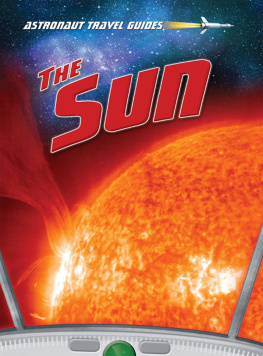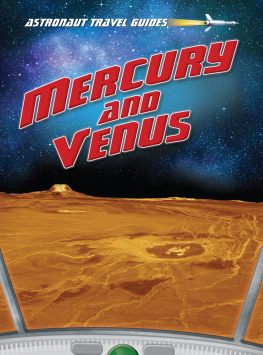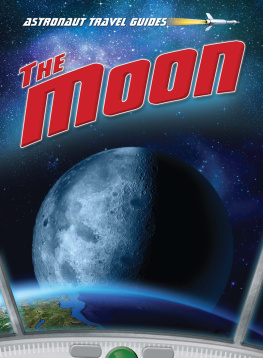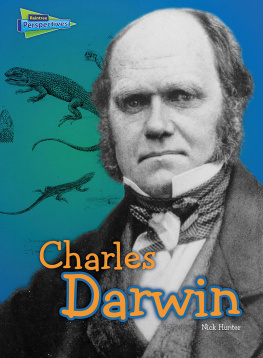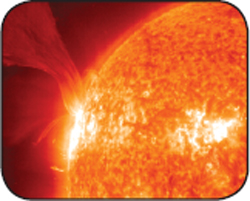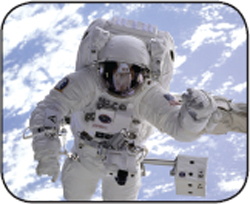FACT FILE
POSITION:
Outer region of the Milky Way galaxy
DISTANCE FROM EARTH:
93 million miles (150 million kilometers). Light from the Sun takes about 8 minutesto reach Earth
SIZE:
866,000 miles (1,392,000 kilometers) in diameter
MASS:
330,000 times greater than the mass of Earth
TEMPERATURE:
- Surface: 9,900 degrees Fahrenheit
(5,500 degrees Celsius) - Core: 27 million degrees Fahrenheit
(15 million degrees Celsius)
MADE FROM:
- Hydrogen: 71 percent
- Helium: 27 percent
- Other gases: 2 percent
SATELLITES:
Eight planets orbit around the Sun (Mercury, Venus, Earth, Mars, Jupiter, Saturn,Uranus, Neptune), plus at least three dwarf planets and many other asteroids andcomets
FIND OUT MORE
BOOKS
Bond, Peter. DK Guide to Space (DK Guides). New York: Dorling Kindersley, 2006.
Goldsmith, Mike. Solar System (Discover Science). New York: Macmillan, 2010.
Mist, Rosalind. Will the Sun Ever Burn Out? Earth, Sun, and Moon (Stargazers Guides).Chicago: Heinemann Library, 2006.
Parker, Steve. The Sun (Earth and Space). New York: Rosen Central, 2008.
INTERNET SITES
FactHound offers a safe, fun way to find internet sitesrelated to this book. All of the sites on FactHound havebeen researched by our staff.
Heres all you do:
Visit www.facthound.com
Type in this code: 9781410945747
PLACES TO VISIT
Hayden PlanetariumCentral Park West and 79th Street, New York, N.Y. 10024www.haydenplanetarium.org
Smithsonian National Air and Space MuseumIndependence Ave. at 7th St. SW, Washington, D.C. 20560www.nasm.si.edu
SIGHTS TO SEE
If you get the chance, you should try to see a solar eclipse. These happen rarelyand can only be seen from certain places. Other Sun-related sights you might be ableto see include the Aurorae, which appear in the extreme north and south of our planet.
FURTHER RESEARCH
- Stars: The Sun is just one of billions of stars in the universe. There is plentyyou can find out about other stars and amazing things like supernovas and black holes.
- Scientists: People like Galileo and Newton made amazing discoveries that helped usunderstand more about the Sun. You can find out more about their lives and discoveriesand the many other advances of the Scientific Revolution.
- Effects of the Sun on Earth: Research the different ways that Earths relationshipwith the Sun affects people and living things, from seasons and energy to how wemeasure time.
WARNING
Make sure that you never look directly at the Sun.Although you can look at stars through binoculars or atelescope, you must never use these to look at the Sun.Looking at the Sun can damage your eyes.
FASTEN YOUR SEAT BELT!
Today, we can travel anywhere we choose on planet Earth. However, there are onlyabout 500 people who have ever left Earth, and only 12 people who have landed onthe Moon.
What would it take to travel beyond the Moon to the planets Venus and Mars, or evento the Sunthe star at the center of our solar system? Spacecraft have been builtthat have traveled millions of miles to the edges of our solar system, but thesespacecraft have not carried humans up until now.
Rockets are used to launch unmanned spacecraft into outer space. These spacecraftgive us images and data about the Sun, planets, and the stars.
ROCKET POWER
The first thing you will need to travel into space is a powerful rocket. The forceof gravity pulls us all toward Earth. To escape Earths gravity, spacecraft needto reach speeds of 25,000 miles (40,300 kilometers) per hour. This means they needto carry a huge quantity of fuel. Being launched into space is a little like travelingin a huge bomb or firework.
STAYING ALIVE
Earth and its atmosphere provide everything we need to stay alive. If you are travelingin space, you will need to take all these things with you. For example, without oxygento breathe, you would not survive longer than a few minutes.
DON'T FORGET
- Take a spacesuit with a helmet to keep you alive, especially if you are planningto leave the spacecraft.
- Exercise equipment will help you keep healthy while you are cooped up in a spacecraft.
- Bring a camera to take some great photos to show your friends when you get back!
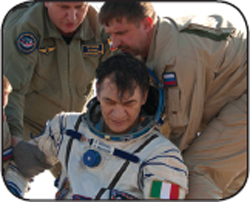
Meet astronaut Paolo Nespoli on page .
Turn to pages to discover more about the surface of the Sun.
Find good crew members for your dangerous journey on pages .
JOURNEY TO THE SUN
People love to travel to warmer countries. But if you tried to travel to the Sunitself, you would get more than you bargained for.
HOW LONG WOULD IT TAKE?
The fastest speed ever recorded by a human-made object was the Heliosprobe thatorbited the Sun in the 1970s. The probe traveled at about 150,000 miles (240,000kilometers) per hour. At these amazing speeds, a spacecraft would take just underone month to reach the Sun, which is 93 million miles (150 million kilometers) fromEarth. However, at current speeds for spacecraft carrying crew members, the journeywould last around six months.

